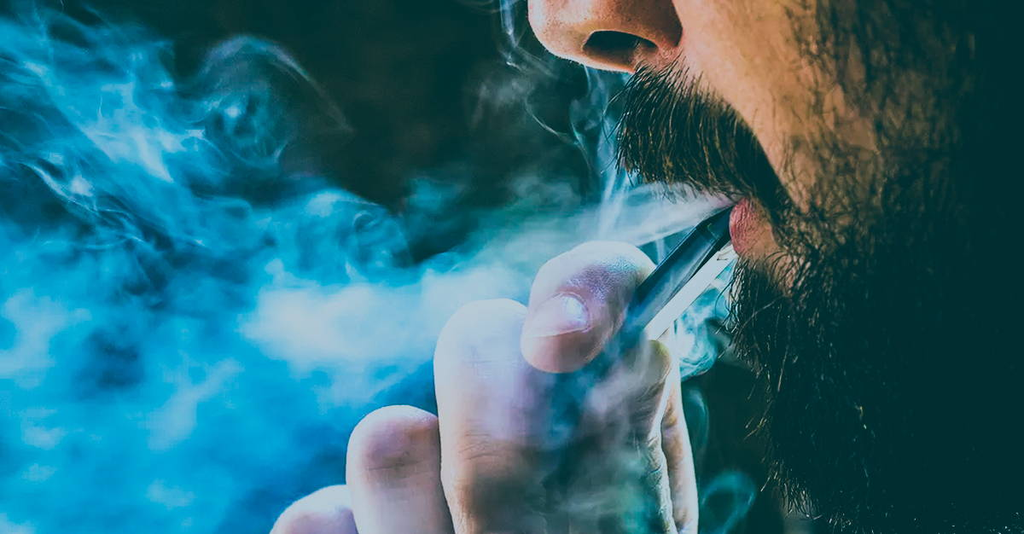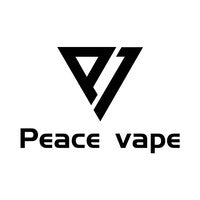
2003 seems like a long time ago now but it was the year that Hon Lik released the first commercially available e-cigarette into the world. Naturally, with the invention of the e-cigarette, came e-liquid. Originally a disposable design, e-cigarettes had a limited flavour range and were kind of the “first draft” of the technology we have available today. It’s been over a decade now and vaping has come a long way - both in terms of the kits you can get but also the e-liquids. Everyone has their favourite flavours but e-liquids are often overlooked in comparison to the big shiny box mods, tanks and nifty little pod kits you can get these days.
So, we’re looking at the history and evolution of this underrated and perhaps slightly underappreciated side of vaping: e-liquid.
A bit like Darwin’s finches evolving differently depending on their diet, vape kits evolved to work better with certain types of e-liquids. Want a strong throat and nicotine hit with minimal vapour? You need a high PG liquid and a mouth to lung device with a plus Ohm coil. Want mammoth clouds, next to no nicotine and minimal throat hit? Pick up a bottle of high VG liquid and pair it with a more powerful Sub Ohm kit.
SO - WHAT IS THE HISTORY OF E-LIQUIDS?
SINGLE-USE E-CIGARETTES, AKA CIG-A-LIKES

A bit like the Model T from Ford, vaping had to start somewhere and it was from the humble beginnings of the cig-a-like. Slim and similar in shape and size to a conventional cigarette, these models were quite limited compared to modern standards. They were single use with a small battery capacity and a finite amount of e-liquid (which you also couldn’t refill). Once your vape juice ran out or your battery died, you needed to throw them away.
The e-liquid itself provided very little in the way of flavour and vapour. The actual variety of flavours was very limited too. Consumer preferences began to change and their demand for better technology meant both devices and their liquids had to evolve.
THE SECOND GENERATION:

Because there was demand for more flavours and varied nicotine levels, the logical move was to develop a vape kit that could be refilled with whatever liquid you wanted. Enter: vapes with tanks.
This meant manufacturers could now start making e-liquids with a lot more variants. Different flavours, more or less nicotine and different PG:VG ratios.
Vaping had become more customisable. Now, you could decide how much nicotine you wanted, in which flavour and also select a PG level according to how strong a throat hit you wanted too.
Plenty of people think you pick your kit first, then buy an e-liquid. Not quite the case. Pick your e-liquid first with it’s nicotine level and throat hit power (or lack thereof) and then you choose from a range of devices that’ll work well with it.
THE CREATION OF THE POD KIT AND WITH IT, NICOTINE SALTS:

While the second generation of devices and liquids was a significant step up, the higher the nicotine level, the harsher the taste. For smokers who were on a pack or more a day, sometimes even a 24mg nicotine strength wasn’t quite enough to give a satisfying hit.
You’ve almost certainly heard of Juul. This one little device that looks like a USB drive has revolutionised the way vaping works - and not just with the design of the pod kit itself, but with nicotine salts. Nic salts are a newer form of nicotine that hits harder and faster, designed with transitioning smokers in mind.
One of the biggest advantages is that nic salt e-liquids provide a smoother hit even at high doses, meaning you don’t have to compromise on flavour. Because of how fast acting they are, you also need less strength too - a 20mg nic salt is equivalent to a 36mg in a freebase formulation.
Nic salts are the most common e-liquid found in pre-filled, closed pod systems. Aside from the Juul there’s also the Aspire Gusto Mini, the Hexa, the SMPO kit and plenty more. While they’re somewhat similar in design to first-gen designs, the nic salts is what really sets them apart. They satisfy nicotine cravings more quickly, are much more flavourful and as the battery of the pod kits is rechargeable, they’re more cost effective too.
THE LEGAL FACTOR - HOW LEGISLATION HAS CHANGED THE PATHWAY OF E-LIQUIDS EVOLUTION:
Vaping and e-liquids are classified as tobacco products, so in the same way that cigarettes are regulated, e-liquids are too. Naturally, this has changed a few things and varies a little depending on where you are. No matter the location, e-liquid manufacturers have adapted accordingly. Across Europe and the UK, we have the Tobacco Products Directive (TPD) established by the EU to regulate the specs of vaping products, how they can be sold and who they can be sold to.
TPD regulations came into full effect back in May 2016. Since then, e-liquids have a maximum strength of 20mg of nicotine and e-liquids that contain nicotine can only be sold in bottles with a maximum 10ml capacity. They also can’t contain any taurine or caffeine. While the nicotine limit is significantly lower than what’s available in America, the main change retailers had to accommodate was the bottle size change.
You know what it’s like. You have a Sub Ohm tank, the resistance is super low, the wattage is high and you get through e-liquid like a Formula One race car gets through petrol. Big bottles were always the way to go for people who had one flavour they loved and for those who have bigger vapes that need a lot of liquid. The 10ml limit on nicotine containing liquids changed how accessible these big bottles were for those who liked a to vape with a bit of nic.
To keep both the law-makers and cloud-chasers happy, e-liquids manufacturers created the shortfill. Chunky bottles of nicotine free liquid with a little bit of space at the top to add a 10ml shot of concentrated nicotine. This meant vapers could mix to their desired strength and still save money by buying bigger bottles.
When it came to the nicotine strength limit, nic salts saved the day there. As we mentioned earlier, because they hit harder, you don’t need as high a strength. You can get plenty of nic salts in a 20mg strength these days and the fact they work as effectively as a 36mg freebase nicotine would means 20mg is really all you need.
Across the pond, the FDA is the regulating body for the e-liquid and vaping industry. After President Obama handed over control to them in 2009, the FDA have been keeping tabs on all the new products that were being made. Now, manufacturers of tobacco products (including e-liquids) have to meet FDA premarket standard before they hit the shelves. This is a great move for making products safer for consumers, however it also means the FDA has the power to ban flavours.
WHERE TO NEXT? THE FUTURE OF E-LIQUIDS:
E-liquid development has come on in leaps and bounds in the last few years alone. Nic salts have obviously been one of the major breakthroughs, but they aren’t the only innovation in the nicotine department. Manufacturers are now creating synthetic forms of nicotine, rather than using nicotine distilled from the tobacco plant. Most nicotine is still derived from tobacco leaves, but the likes of Next Generation Labs have synthesized nicotine from scratch, especially for e-liquids and nicotine replacement therapy.
While most of the time, natural is best, this may be the next big thing for e-liquids. Given the current legislation includes e-liquids under the tobacco products category, if they contain no tobacco at all, there’s more potential for this to change.
If we look at things regionally, there are two potentially major changes afoot. Following the “Juuling” trend amongst American teenagers the FDA are now considering a flavour ban for all e-liquids except menthol and tobacco. Many adults use fruit, candy and dessert inspired flavours to quit smoking when they switch to vaping. Bearing that in mind, it’s unclear what effect a flavour ban could have on the American e-liquid and vaping industry.
A little closer to home, after two years since the referendum, Brexit is looming and with it a whole lot of questions have been raised. Amongst the vaping world, the obvious one is: will TPD still apply? As TPD is an EU initiative, at this stage we’re not clear on whether the regulations will still be applicable or enforced in the same way.
In less than a decade and a half, e-liquids and vaping have evolved rapidly. They’ve changed everything from their nicotine content and what kind of nicotine they contain to updating how they’re made and sold to maintain compliance by law. Whether you want a 50:50 liquid for a mouth to lung kit, a high VG and nicotine free mix for your Sub Ohm tank or a nic salt pod kit, e-liquids are as diverse and unique as the vapers using them.
What e-liquid do you vape? What is the best e-liquid flavour you've tried? Let us know in the comments.
